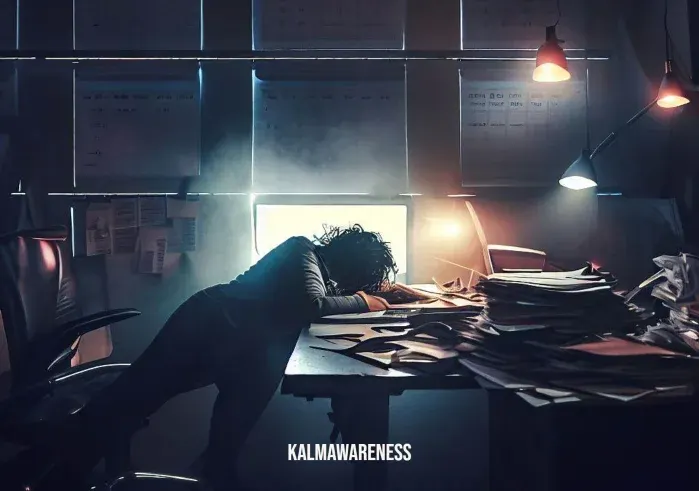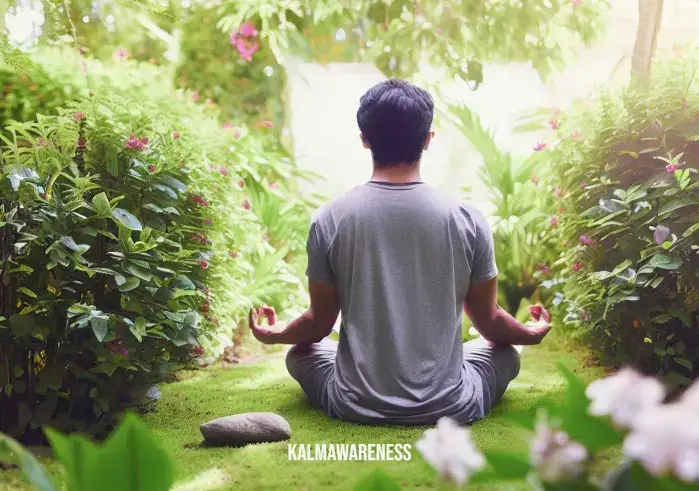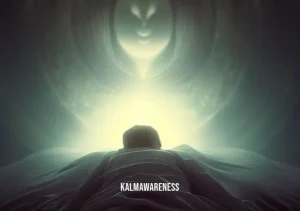The Art of Recognizing and Overcoming Burnout: Taking a Leave of Absence
Burnout, a term that has gained considerable attention over the years, can be described as a state of physical or emotional exhaustion. It’s especially prevalent among professionals who have been consistently overburdened without adequate rest and relaxation. But how do you know when it’s time for a burnout leave of absence? And, most importantly, how can you recover effectively?
Recognizing the Symptoms of Burnout
Before jumping into the topic of taking a leave of absence, it’s pivotal to first recognize the symptoms of burnout. Feelings of constant fatigue, decreased work efficiency, irritability, and even insomnia are common indicators. Speaking of insomnia, it’s interesting to note that many have turned to guided meditation as a potential remedy. The article on guided meditation for insomnia offers insights into this technique.
The Connection with Sleep
Sleep, or lack thereof, plays an integral role in burnout. Those experiencing burnout often find it difficult to relax their mind. Turning to alternative methods such as the 20-minute guided meditation for sleep or even trying out a short 15-minute power nap could be beneficial.
“Burnout is not just a state of mind. It’s a sign that our soul needs rest and rejuvenation.”
The Need for a Burnout Leave of Absence
Recognizing the need for a break is pivotal. This is not only beneficial for one’s health and well-being but also for professional productivity. A study published in the Breathe Journal Magazine discussed the correlation between consistent overwork and diminishing creativity.
If you’ve identified with the symptoms mentioned above and are looking for more than just short-term relief, it might be time to consider a more prolonged burnout leave of absence. Leading an exhausted workforce further elaborates on the repercussions of ignoring such symptoms in a professional setting.
Incorporating Healing Practices during the Absence
A leave of absence needn’t only be about physical rest. Incorporating healing practices such as deep body healing while you sleep or guided meditation for heartbreak can be beneficial depending on the underlying causes of the burnout.
Furthermore, this period can be an opportunity to reconnect with one’s spiritual side. Resources like the 11th step guided meditation and the 12-step guided meditation can serve as a compass during this introspective journey.
Conclusion of Part One
Understanding and addressing burnout is more than just recognizing the need for sleep. It’s about holistic well-being and recognizing when to step back from our daily routines. It’s also about finding healing practices that resonate with our individual needs.
Please continue to the next part of the article where we’ll dive deeper into creating a strategy for your leave of absence and how to maintain work-life balance during recovery.

How to Plan and Maximize Your Burnout Leave of Absence
Upon recognizing the signs of burnout, the next natural step is to understand how to effectively plan and utilize your burnout leave of absence. This phase involves meticulously structuring your time away, implementing strategies for a balanced return, and learning to prioritize self-care.
Preparing for Your Leave: A Checklist
- Notify your employer: Always communicate with your employer, preferably with medical documentation to back up your need for a leave. This will ensure that your leave is acknowledged and sanctioned.
- Set boundaries: Make it clear that during your leave, work communications should be limited. The article on time to wine down meaning offers unique insights into setting boundaries and decompressing.
- Arrange for a temporary replacement: If possible, train a colleague to handle your tasks temporarily.
- Disconnect digitally: It’s vital to disconnect from work emails and apps. Consider even using tools or apps that help in digital detoxification.
- Create a daily routine: This routine shouldn’t resemble your workday but should instead focus on relaxation and recovery. Delving into Christian soaking can be an interesting spiritual venture during this period.
Utilizing Relaxation Techniques during Your Leave
Taking a leave isn’t just about being away from work. It’s about healing, rejuvenating, and finding peace. Here are some effective relaxation techniques to consider:
- Amethyst Healing: Both the practices of amethyst sleep and amethyst sleeping offer powerful relaxation benefits and can be a part of your restorative journey.
- Sound and Energy Healing: Tapping into unconventional techniques such as arcturian sound and energy healing can be profoundly rejuvenating.
- Guided Meditation: With the vast resources available, diving into practices like drsteven greer meditation can be another soul-soothing option.
Balancing Work-Life Upon Return: A Glimpse in Numbers
To ensure a balanced return to work, it’s essential to take actionable steps. Here’s a table to help you understand the balance better:
| Activity | Hours per Week (Before) | Hours per Week (After) |
|---|---|---|
| Work (including overtime) | 50 | 40 |
| Time spent in relaxation techniques | 5 | 10 |
| Hours of uninterrupted sleep | 6 (daily) | 8 (daily) |
| Personal hobbies and activities | 2 | 5 |
| Mindful practices (Meditation/Yoga) | 1 | 3 |
The above table illustrates the significance of reallocating time. The 28-day sofa yoga challenge can be a fantastic way to kickstart mindful practices upon your return.
Concluding Thoughts for Part Two
A burnout leave of absence isn’t a mere break from work; it’s a well-structured, purposeful period of recovery and rejuvenation. With the right techniques and planning, one can ensure that this period is beneficial and paves the way for a more balanced professional life.
Please continue to the next part of the article where we will explore the societal perspectives on burnout, address common misconceptions, and delve deeper into methods that companies globally are adopting to combat employee burnout.
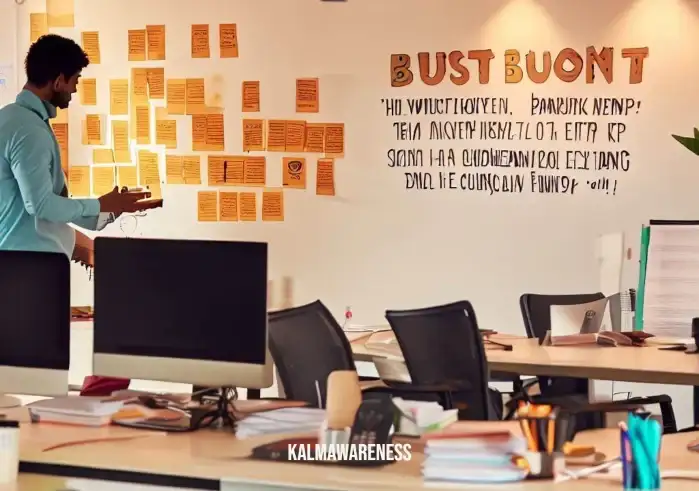
Societal Perspectives and the Realities of Burnout Leave of Absence
The term “burnout leave of absence” is no longer limited to medical jargon or whispered in hushed tones in corridors. Today, it stands tall as a defining element of modern work culture and societal norms. The rising number of burnout cases globally demands our attention to understand the societal perspectives and, more importantly, the realities that surround this crucial issue.
Shifting Societal Views
Historically, taking time off work due to burnout was often stigmatized. Employees worried about being perceived as weak or not dedicated enough. Fast forward to today, and the narrative is changing, albeit gradually. Progressive companies and aware societies now recognize burnout for what it truly is – a mental and emotional exhaustion that demands immediate attention.
One of the renowned writers, Anne Lamott, once said:
“Almost everything will work again if you unplug it for a few minutes, including you.”
This quote, simple yet profound, highlights the importance of disconnecting, especially in our hyper-connected world. Articles like kinder rest mat elucidate on the fact that true rest is not just a luxury, but a necessity.
The Role of Meditation and Mindfulness
Meditation practices, such as 60-minute yoga nidra, are gaining prominence as people become more aware of their benefits. Deepak Chopra, a prominent figure in the world of mindfulness, once remarked:
“In the midst of movement and chaos, keep stillness inside of you.”
This encapsulates the essence of meditation. Amidst the chaos of burnout, finding a moment of stillness can make all the difference. The act of introspection and grounding oneself is more than a luxury; it’s a requirement in our frenzied lives.
Recognizing the Value of Self-worth
As Oscar Wilde aptly put:
“To love oneself is the beginning of a lifelong romance.”
In the context of burnout, this speaks to the importance of self-worth and self-care. Understanding one’s value outside the realms of professional achievements can prevent the severity of burnout and the need for a leave of absence. Exploring deeper aspects of self through unique means, like the fetal pose in yoga, can be a beginning towards this journey of self-appreciation.
Global Company Initiatives: A Beacon of Hope
Globally, companies are waking up to the realities of burnout. Modern HR policies incorporate wellness programs, meditation sessions, and more, ensuring employees maintain a work-life balance. Platforms that promote final savasana, which is a yogic practice symbolizing final relaxation, are gaining traction in corporate settings.
The words of Maya Angelou resonate deeply in this context:
“My mission in life is not merely to survive, but to thrive; and to do so with some passion, some compassion, some humor, and some style.”
Indeed, companies are realizing that for employees to thrive, a supportive environment is paramount. No longer is the focus just on survival or basic sustenance.
Final Thoughts for Part Three
As we transition into more empathetic societies, the approach to a burnout leave of absence and mental well-being is witnessing a transformative shift. The infusion of wisdom from great minds and the understanding of self-worth are steering this change. True success, after all, is intertwined with well-being.
Please continue to the next part of the article where we’ll delve into the role of community and support systems in addressing burnout, the psychological implications, and potential future trends in combating workplace stress.
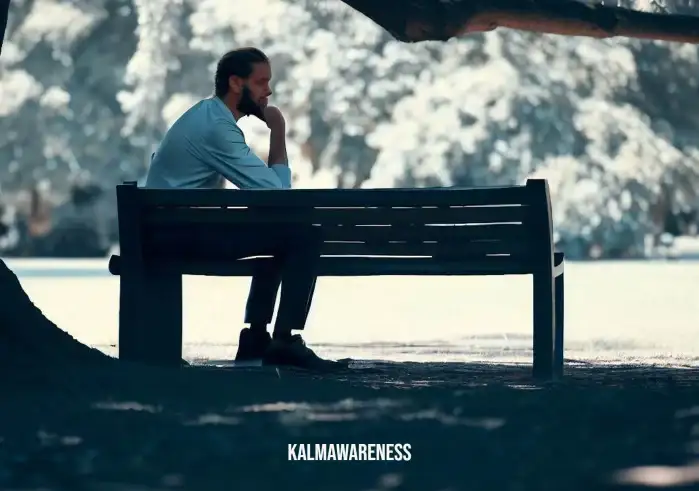
The Pillars of Community and Emotional Healing in Overcoming Burnout
Burnout is not just an individual’s challenge but often a manifestation of larger societal pressures. Communities and support systems play a crucial role in aiding individuals who are grappling with the overwhelming pressures leading to a burnout leave of absence. As the adage goes, “It takes a village…” and in the realm of mental and emotional well-being, this couldn’t be truer.
The Power of Community
The healing power of community, especially in the realms of mental and emotional distress, is unparalleled. Communities provide a cushion of support, understanding, and resources that can make the journey from burnout to recovery smoother.
Helen Keller’s words reverberate with truth and hope:
“Alone we can do so little; together we can do so much.”
Online platforms have also emerged as a modern-day community for those seeking solace and understanding. Engaging with like-minded individuals on platforms such as Breathe Journal Magazine can offer invaluable insights and a sense of belonging.
Emotional Healing and Mindful Practices
Emotional healing is the cornerstone of overcoming burnout. The embrace of mindfulness and meditation practices, such as christian soaking, can provide the calm amidst the storm, helping individuals anchor their emotions and find clarity.
A quote that resonates deeply with the journey of emotional healing is by Rumi:
“The wound is the place where the Light enters you.”
And it’s in that light, one finds hope, clarity, and the strength to move forward, even after a burnout leave of absence.
Table: Impact of Community and Emotional Healing on Burnout Recovery
| Factors | Individual Approach | Community Support Approach |
|---|---|---|
| Understanding of Burnout | Often limited by personal experiences | Diverse experiences bring broader perspectives |
| Recovery Time | Can be prolonged due to isolation | Often faster due to shared resources & support |
| Emotional Healing | Sole reliance on personal coping mechanisms | Access to multiple healing techniques & shared experiences |
| Resources | Limited to personal research | Access to a plethora of shared resources |
| Sense of Belonging | Might feel isolated | Reinforced by shared experiences and understanding |
This table underscores the profound difference community and collective knowledge can make in an individual’s recovery journey.
Hope on the Horizon: Overcoming Burnout with Resilience and Support
Viktor E. Frankl, in his seminal work “Man’s Search for Meaning,” opined:
“When we are no longer able to change a situation, we are challenged to change ourselves.”
For many facing the desolation of burnout, this change is about seeking help, reaching out to communities, and embracing healing practices such as the unique amethyst sleeping method, which combines the power of crystals with the rejuvenation of rest.
Resilience, often the silver lining in the cloud of despair, coupled with the strength of community, becomes the beacon of hope for many navigating the turbulent waters of burnout.
Concluding Thoughts for Part Four
The journey from burnout towards holistic recovery is not one of isolation but of collective strength, shared wisdom, and profound resilience. Communities, both physical and virtual, emerge as the unsung heroes, providing a safety net of understanding, resources, and emotional succor.
As you continue to the next chapter of this narrative, we will explore the role of holistic practices, the interplay between physical and emotional well-being, and the future of workplace wellness initiatives in preventing burnout.

Nurturing Holistic Health for Burnout Prevention
Burnout, a relentless psychological strain, demands holistic approaches to both prevention and recovery. While the previous chapters explored the role of community and emotional healing, this section delves deeper into the harmony between physical and mental well-being and the innovative methods that are making waves in burnout prevention. So, for those on a burnout leave of absence, this chapter offers a tapestry of rejuvenating pathways to explore.
Sleep & Its Rejuvenating Power
Arguably the most undervalued component of holistic health, sleep is the cornerstone for rejuvenation. The modern world’s accelerated pace often pushes sleep to the back burner. However, as the foundation for mental and physical recuperation, it’s paramount for those combating burnout.
- Yoga Nidra: A blend of meditation and conscious relaxation, 60-minute Yoga Nidra sessions have been hailed as a bridge to deeper, more restorative rest.
- Targeted Meditation: Sessions like deep sleep relaxation can direct the mind to a restful state, making the transition to sleep seamless and therapeutic.
“Sleep is that golden chain that ties health and our bodies together.” – Thomas Dekker
The Reviving Touch of Nature
Embracing nature is akin to a gentle, nurturing hug for our souls. The sound of cascading water, the rustling leaves, the chirping birds – they all harmonize to create a symphony of peace. And for the burnout-afflicted, nature can be the silent therapist.
- Crystal Therapy: An emerging field, Amethyst sleep merges the calming energy of crystals with the power of rest.
- Arcturian Healing: The mystique of Arcturian sound and energy healing draws inspiration from the cosmos, channeling interstellar energies for holistic rejuvenation.
Mindful Consumption & Diet
What we consume deeply influences our mental state. Modern nutrition is now recognizing the profound connection between diet and mental health.
- Wine-Down Practices: The term ‘time to wine down meaning‘ is more than just a pun. Used responsibly, certain elements of our diet can help us relax.
- Holistic Dietary Practices: Practices that align physical health with emotional well-being can be powerful burnout countermeasures.
Physical Movement & Mental Agility
It’s an age-old wisdom, often reiterated but underappreciated: The health of the mind is intrinsically tied to the body’s vitality.
- Sofa Yoga: For those who can’t fathom rigorous physical exercise, the 28-day sofa yoga challenge offers a balanced fusion of relaxation and movement.
- Energizing Meditation: Techniques like deep body healing while you sleep amalgamate physical relaxation with mental invigoration.
“In physical movement, there’s a secret to mental liberation.” – Anonymous
Pioneering Tools & Techniques
In the age of digital evolution, innovative tools and platforms offer solace for the burnout-afflicted.
- Digital Platforms: Applications like the aa daily meditation app offer guided sessions to help users navigate their burnout journey.
- Journaling & Mindfulness: Platforms such as Breathe Journal Magazine facilitate mindful introspection, a crucial step in the journey from burnout to balance.
In Retrospection
As this chapter wraps, it’s evident that the journey from burnout to holistic health isn’t linear. It’s a mosaic of sleep, nature, diet, movement, and innovation, each piece fitting harmoniously to create the complete picture. For anyone on a burnout leave of absence, this chapter reaffirms that multiple avenues can lead you back to equilibrium.
As we traverse to the next chapter, expect an immersive discussion on the future of work, organizational changes post-pandemic, and the evolving narrative of work-life balance in the modern world. Dive in, and let’s continue the odyssey together.
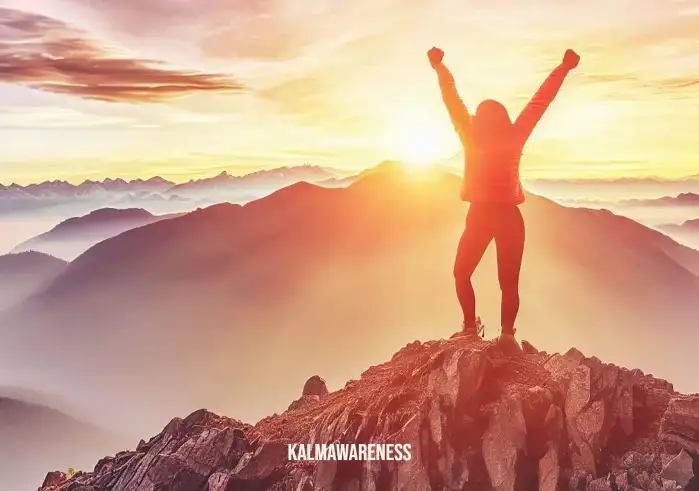
Embracing a New Dawn: Rediscovering Life Post-Burnout
As we navigate the final chapter of this exploration on burnout leave of absence, the focus shifts from recovery to the future: what does life look like after recovering from burnout? How does one reintegrate into the rhythm of life, ensuring the lessons from the burnout experience continue to guide one’s steps? Let’s embark on this introspective journey, filled with hope, optimism, and an invitation to lifelong learning.
Reintegration into Work
For many, a burnout leave of absence is often followed by a gradual return to professional life. But returning shouldn’t mean reverting to old patterns.
- Flexible Work Modes: The modern workplace recognizes the value of flexibility. Adopting practices from Christian soaking, which promotes deep rest and reflection, can be incorporated into work routines for balance and rejuvenation.
- Mindful Leadership: Leaders need to be especially attuned to the lessons from their burnout journey. Drawing inspiration from articles like leading an exhausted workforce, they can cultivate an empathetic and understanding workspace.
Continued Self-Care
While the acute phase of burnout might have passed, ongoing self-care is imperative.
- Meditative Practices: Maintaining a regular routine, perhaps with tools like 15-minute power nap, can serve as short daily retreats to recharge.
- Body and Soul Nurturing: Engaging in heart-soothing activities like the final savasana can help in maintaining a serene mind-body connection.
Building Resilient Communities
It’s often said that it takes a village. Post-burnout, surrounding oneself with a supportive community can be transformative.
- Support Groups: Platforms like the 12 traditions of aa long form emphasize the power of community in healing and can be a haven for those reintegrating post-burnout.
- Sharing Stories: Sharing one’s journey through platforms or reading experiences from breathe journal magazine can be therapeutic, offering validation and camaraderie.
Lifelong Learning
Burnout is as much a teacher as it is a challenge. Embracing the lessons means committing to lifelong learning.
- Staying Updated: Engaging with resources like drsteven greer meditation can provide newer perspectives on well-being, ensuring one remains at the forefront of self-care practices.
- Workshops and Retreats: Participating in focused retreats or learning from platforms like arcturian love can be pathways to deepening one’s understanding of holistic health.
In Conclusion
Burnout is not the end; rather, it’s a new beginning. For those who’ve taken a burnout leave of absence, it’s an opportunity to rebuild, realign, and reimagine a life of balance, purpose, and joy.
As this article draws to its close, let this not be an ending but an invitation. An invitation to continue exploring, learning, and nurturing one’s well-being. Dive deep into the plethora of resources available, such as those found in our breathe journal magazine, and keep the flame of curiosity and self-care burning bright.
To every reader, may your journey be filled with discovery, compassion, and boundless vitality. The horizon is painted with the hues of hope, and as always, the best is yet to come.
